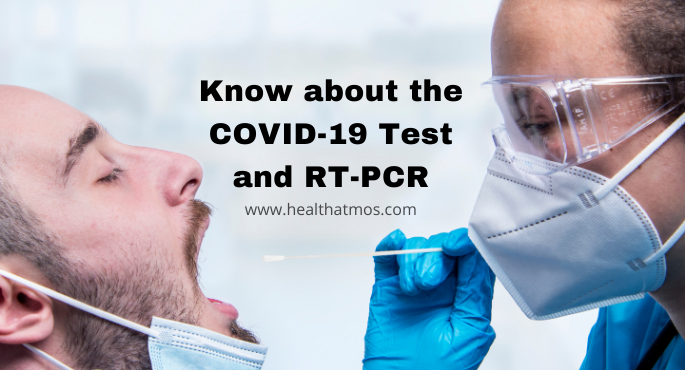Know about the COVID-19 Test and RT-PCR

When to consider getting tested for a COVID-19 diagnosis?
If you’ve been exposed to the virus or show mild symptoms of Covid-19, you need to know the correct facts about Covid-19 & whether you should get an RT-PCR Test or not. Call your doctor for advice about how and when to get tested. You can also access the Centers for Disease Control and Prevention’s (CDC) to help you decide when to get tested or seek medical care.
The symptoms vary from one person to another. However the most common symptom of Covid-19 is that they lose their sense of taste and smell. Some people may have other symptoms, such as the following:
- fever
- cough
- fatigue
- shortness of breath
- a sore throat
- headache
- runny or stuffy nose
- diarrhea
- muscle aches and pains
The symptoms of COVID-19 typically appear within 2 to 14 days after initial exposure to the virus. Some people show few to no signs of illness during the early phase of infection but can still transmit the virus to others.
In mild cases, home care and self-quarantine measures may be all that is needed to fully recover and keep the virus from spreading to others. But some cases call for more complex medical interventions.
What is an “Immunity” test?
There are two main types of COVID-19 tests.
- Polymerase chain reaction (PCR) testing looks for the presence of the virus’ genetic material (RNA) on a nasal or throat swab. These tests can tell whether someone has an active infection.
- The other type is serological testing. This type of blood test looks for the presence of antibodies produced by the immune system against SARS-CoV-2.
Antibodies help the body fight an infection and are specific to a virus, bacteria, or other pathogen. If [COVID-19] antibodies are present when you run the [serological] test, that means a person is infected in the past and also, “those antibodies can be present in someone who may have been infected but never even had any symptoms. People with weakened immune systems, though, may not make these antibodies properly. After transmission, it can take several days for the body to produce antibodies to a virus. That makes serological tests less useful than viral RNA tests for diagnosing someone with COVID-19.But antibodies can last for a long time in the body, which makes them ideal for identifying whether someone had once contracted the virus even if it was weeks ago.
What is involved with the PCR testing?
Polymerase chain reaction (PCR) testing remains the primary COVID-19 diagnostic testing method. This is the same type of test that was used to detect severe acute respiratory syndrome (SARS) when it first appeared in 2002.
To collect a sample for this test, a healthcare provider will likely perform one of the following:
- swab your nose or the back of your throat
- aspirate fluid from your lower respiratory tract
- take a saliva or stool sample
Researchers then extract nucleic acid from the virus sample and amplify parts of its genome through a reverse transcription PCR (RT-PCR) technique. This essentially gives them a larger sample for viral comparison. Two genes can be found within the SARS-CoV-2 genome.
Test results are:
- positive if both genes are found
- inconclusive if only one gene is found
- negative if neither gene is found
Your doctor may also order a chest CT scan to help diagnose COVID-19 or get a clearer view of how and where the virus has spread.
Follow our blog for more health related articles and get in touch to book a test.
